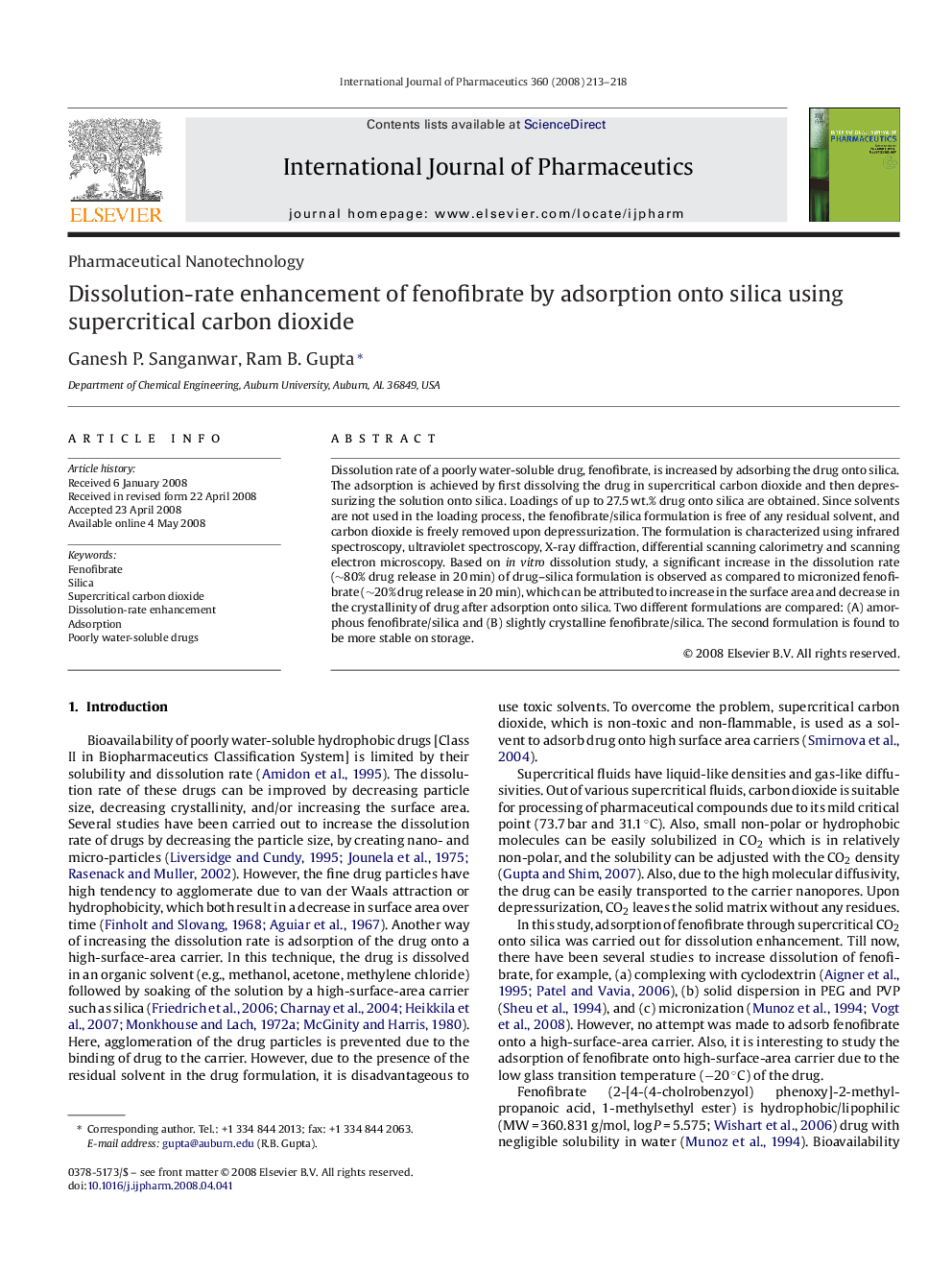| Article ID | Journal | Published Year | Pages | File Type |
|---|---|---|---|---|
| 2505112 | International Journal of Pharmaceutics | 2008 | 6 Pages |
Dissolution rate of a poorly water-soluble drug, fenofibrate, is increased by adsorbing the drug onto silica. The adsorption is achieved by first dissolving the drug in supercritical carbon dioxide and then depressurizing the solution onto silica. Loadings of up to 27.5 wt.% drug onto silica are obtained. Since solvents are not used in the loading process, the fenofibrate/silica formulation is free of any residual solvent, and carbon dioxide is freely removed upon depressurization. The formulation is characterized using infrared spectroscopy, ultraviolet spectroscopy, X-ray diffraction, differential scanning calorimetry and scanning electron microscopy. Based on in vitro dissolution study, a significant increase in the dissolution rate (∼80% drug release in 20 min) of drug–silica formulation is observed as compared to micronized fenofibrate (∼20% drug release in 20 min), which can be attributed to increase in the surface area and decrease in the crystallinity of drug after adsorption onto silica. Two different formulations are compared: (A) amorphous fenofibrate/silica and (B) slightly crystalline fenofibrate/silica. The second formulation is found to be more stable on storage.
